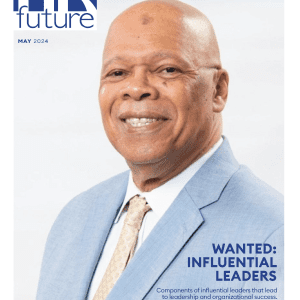David Hilliard shares his views on change management programmes with Alan Hosking.
What makes change programmes successful?
People are the deciding factor – they make successful change programmes possible. Models for change management highlight the key elements of successful change – strategy, process, technology and, of course, people. Most of them suggest these factors are equally important, but I believe the impact of peopledwarfs the other dimensions.
Of course, people – programme visionaries, planners and deliverers – are the lifeblood of any project. People are both the initiators – and the unwitting saboteurs of successful change. They are our most valuable asset – but also the most potentially disruptive.
On change programmes, typically the same kind of problems crop up – time and time again. The problems always relate to the complex interrelationship between people and
undercurrents in team working. They’re so often glossed over at the outset of any large change initiative, but people are indispensable to successful change.
The problems we face, don’t have to be high-profile, or even large-scale, to prove an obstacle to successful change. All it takes is one or two people-related problems to make our jobs as change agents much more difficult.
Could you give me an example?
I have a short story of my own to add. Just one of many stories I could tell you about people – in this case me – getting in the way of success on change initiatives.
Years ago, I worked for a technology company with a ‘can do’ culture, and I was sent overseas to rescue a programme that had gone badly off the rails. When I arrived, I was met with misleading, vague plans and progress reports that were little more than fairy-stories. No one outside the programme knew what a fiasco it was, except me.
I should have blown the whistle immediately, but was worried about being seen as a ‘loser’ in HQ. So, I got swept along with the company’s ‘can-do’ attitude and tried to fix it. This meant months of putting a positive spin on what was essentially terrible news.
Eventually, I ‘came clean’ and told management they should cancel the programme. It didn’t go down well. Everything I thought would happen did. I was removed from my job and seen as a loser. Five months later, the management board eventually agreed with me, but it was a hard lesson to learn.
How does one overcome the biggest threats to successful change?
There are three big and damaging threats to look out for when we’re aiming to facilitate successful change and, more importantly, overcome them. It’s not pretty reading, but any one of these can slow a change programme down or, worse, stop it in its tracks.
Challenge 1. No alignment – a disjointed executive team, all pulling in different directions, with no shared vision of the change. Alignment is binary. Your team is aligned or it’s not. No caveats. The entire executive team must share a common view of the change, understand the reasons for it, and share a collective accountability for seeing the programme through. Everyone must visibly commit their organisations to deliver the change.
Challenge 2. No focus – programme deliverers being distracted by conflicting priorities and responsibilities – leading to poor time and resource management.
Focus is about directing more energy into fewer programmes. A very serious point. It’s not unusual to find over 100 projects supporting a change programme – large and small – each being managed in the same way. Where’s the focus in that?
Make sure the leadership team who have to execute the change programme has the time, resources and headspace they need to do a good job. They must be freed from their other responsibilities throughout the process.
Challenge 3. Wishful thinking – a naïve vision from the top that isn’t fully formed or researched and is ultimately unattainable. Targets are not plans and management teams must understand the difference. It’s not always obvious they do. We must make sure the change the organisation wants to make is practical. Don’t agree to plans that assume nothing will go wrong, because they will.
By spending time getting things on a solid footing during the set-up phase, we can prevent human-related problems like these from cropping up at all.
Any last thoughts?
Instead of looking at the human element as ‘a fire to be fought’ midway through a struggling change programme, we should critically examine a programme’s vital set-up phase to resolve issues of human complexity and team dynamics before the programme begins.
Programme Setup, if done properly, is an enormous opportunity for companies to really drive high performance on a programme.
Think of it like a ‘pre-flight checklist’. No pilot would dream of taking off without running through an exhaustive list of tests, assessments and safeguards each and every time they fly. People who can challenge current practice, and be a catalyst for improving business performance, help the entire organisation achieve its strategic objectives and realise value from major transformations.
There’s always a lot for people to unlearn in any change programme and a targeted approach to managing the three biggest execution hazards goes a long way towards bringing about long-term, sustainable transformation.
Profile
David Hilliard is CEO and Founder of Mentor, a professional services business helping companies deliver their most demanding business critical programmes. He is a trusted hard-core specialist with encyclopaedic skills on strategy execution. A down-to-earth practitioner, with over 30 years’ experience in the telecoms and service industries. David works behind the scenes with CEOs and senior executives, helping to unscramble problems blocking high performance. David believes most executives continuously challenge themselves to get better at their craft – and it shows in the work they do.
This article appeared in the November 2018 issue of HR Future magazine.









